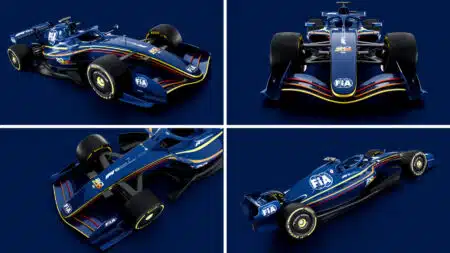But the 2026 aero regulations mark, at least in theory, a shift towards adaptability and overtaking, rather than the relentless pursuit of peak downforce.
Central to this transformation is the introduction of active aerodynamics: cars will feature X-mode for low drag on straights and Z-mode for maximum downforce through corners.
These modes, controlled by both drivers and pre-set circuit zones, will fundamentally alter how teams approach set-up and in-race tactics.
The active two-flap front wing and simplified rear wing are designed not only to reduce drag and weight but also to create cars that are far more agile than their predecessors.
Notably, the large ground effect venturi tunnels have been eliminated, replaced by flatter floors, a more compact diffuser, and higher ride heights.
These changes dramatically reduce the risk of porpoising, a problem that has plagued recent ground-effect designs, while simultaneously enabling cars to follow each other more closely by minimising the disruptive effects of turbulent air.
Efficiency is also front and centre, with a regulatory mandate for a 30% reduction in downforce and a 55% drag cut. This means teams can no longer count on maximising aerodynamic grip or simply overpowering circuits with raw speed.

Render of a 2026 F1 car
FIA
Instead, the new formula will reward those who master dynamic set-up work, optimise aero modes for real-world race conditions, and help drivers exploit every bit of mechanical and aerodynamic grip available.
The overall effect should, on paper, not only produce closer racing, but also create an engineering challenge that will force teams to innovate and adapt quickly, particularly as they try to figure out what the effect of all changes is.
Teams like Aston Martin stand out as a likely beneficiary of the new rules, especially with the addition of Newey, who gets a blank sheet to design from scratch.
Rivals like Red Bull, meanwhile, may initially struggle to maintain their previous aero advantage, particularly now the team has undergone a leadership overhaul and is still seeking stability.
The engine factor
Next year’s engine regulations represent a fundamental change in F1 power unit philosophy that could have a seismic effect on car performance.
For the first time, the hybrid element of the power unit will supply as much power as the internal combustion engine itself: a genuine 50/50 split, with roughly 536bhp delivered by the V6 turbo and another 470bhp from the much-upgraded MGU-K hybrid system.





